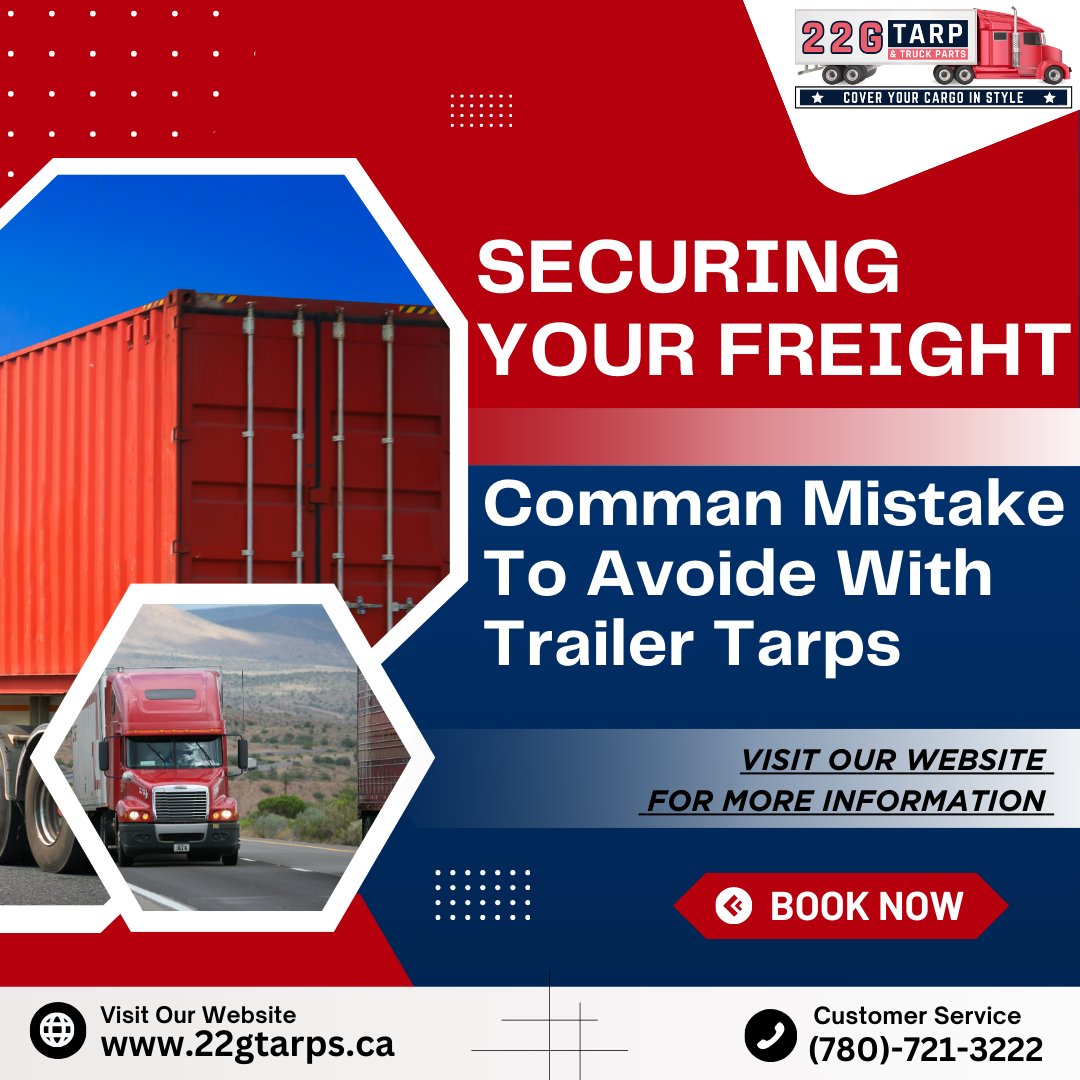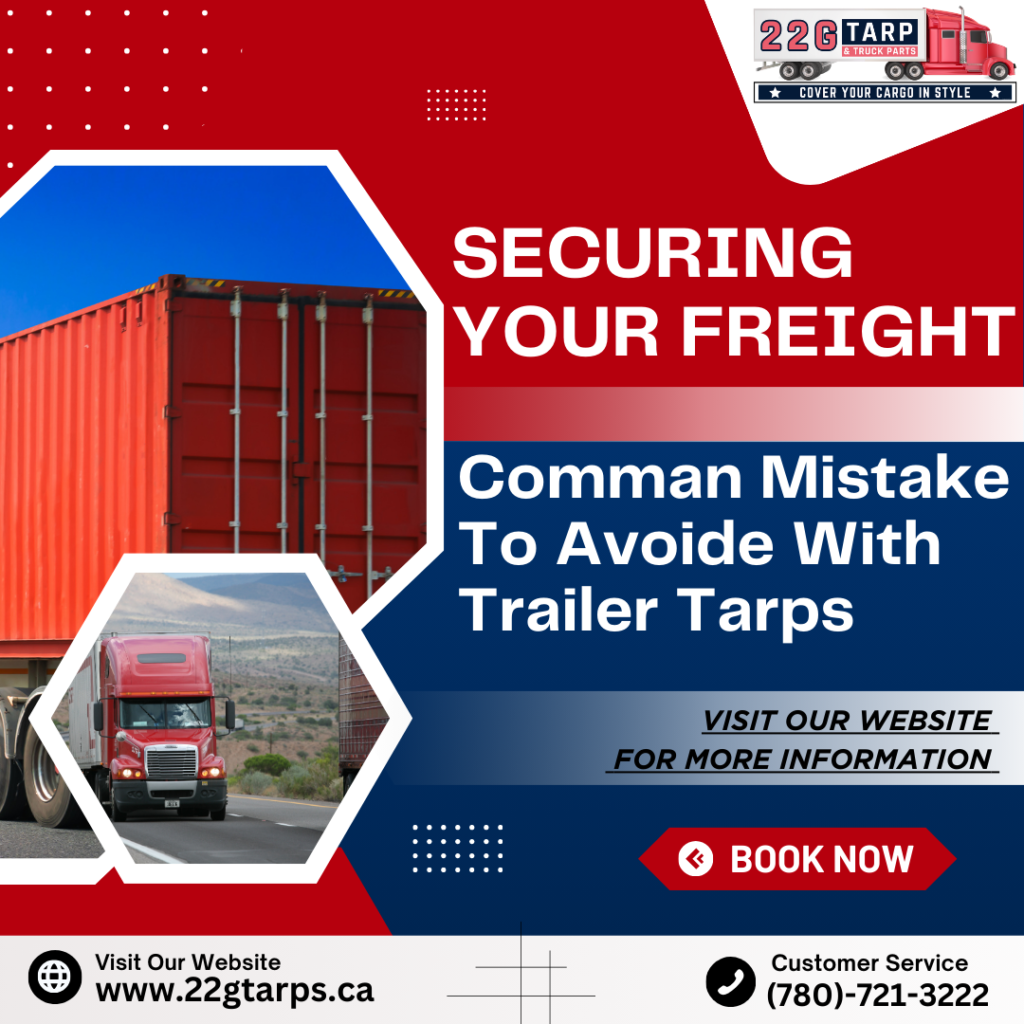
Securing Your Freight: Common Mistakes to Avoid with Trailer Tarps | Securing your freight is an important part of any trucking business, and using trailer tarps correctly is a big part of making sure your freight is safe. However, a lot of truckers make simple mistakes with covers that can make their cargo less safe. By learning about these mistakes and the right way to use tarps, you can keep your goods from getting damaged and make sure they get to their destination undamaged.
Tarps for trailers, especially high-quality ones like 22G Tarps, are made to protect against the weather and road debris. However, if they are not installed or handled correctly, they can lose their advantages. By being aware of and fixing common tarp mistakes, you can improve the safety of your freight and keep its integrity, making the shipping process safer and faster.
Common Mistakes to Avoid When Using Trailer Tarps for Freight Safety
1. Choosing the wrong kind of tarp
People often make the mistake of picking the wrong type of trailer tarp for the job. Different kinds of freight need different kinds of tarps to make sure they are covered and safe. Lumber and steel tarps, for example, are made to cover heavy items with sharp edges, while flatbed tarps are better for general goods. If you choose 22G tarps, which are known for being strong and flexible, your cargo will be well covered no matter what kind it is. To properly secure your freight, ensure you select the right tarp for your specific cargo needs.

2. Installing the tarp incorrectly
For safety, you must use the right tarping methods to protect your goods. Securing your freight correctly is crucial; if you don’t place tarps correctly, they could come loose during transport, leaving cargo open to the weather and possible damage. Make sure that the right straps and closures are used to keep the tarps in place. Checking the tarps for damage before each use can also keep them from breaking down in the middle of the road.
3. Not doing regular maintenance
For long-term cargo safety, it’s important to keep your trailer covers in good shape. As time goes on, tarps can get holes, tears, and weak spots that make them less useful. Securing your freight means checking your blankets often for damage and fixing or replacing them as needed. These problems can happen less often if you use good 22G tarps, but they still need to be maintained regularly.
4. Not paying attention to the weather
The weather has a big impact on the safety of freight. Not planning for bad weather can cause tarps to not be properly secured and goods to get damaged. Therefore, before you go on a trip, you should always check the weather report and make changes to your tarping plan based on what you find. Additionally, in harsh conditions, you might want to use extra tarps or methods for stronger tarping to get the most protection.
5. Not enough security for the cargo
There are more ways to securing your freight than just using trailer covers. Proper methods for securing cargo must be used to keep it from moving while it’s being moved. To keep your stuff in place, use the right straps, chains, and bands. Your goods won’t be safe under even the best tarps if they aren’t firmly fastened down. When you use good straps and good tarps like 22G tarps together, you get a complete answer for cargo safety.
6. Not following best practices
For tarping solutions to work effectively and for total freight security, trucks must follow the best practices. This means, first and foremost, getting regular training on how to properly use tarps. Additionally, keeping up with industry standards is crucial. Furthermore, always striving to improve your methods can make a significant difference. When you follow best practices, you can avoid making common mistakes and, consequently, keep your goods safe during the whole trip.
7. Using tarps that are too small
People also often make the mistake of using blankets that are too small or too big for the load. If the tarp is too small, it might not cover enough or have too much material that flaps around in the wind, both of which can make the goods less safe. Pay close attention to how much stuff you have and pick covers that fit. There are different sizes of 22G tarps, so it’s easy to find the right one for your needs.
Read more articles:
- Find the best Truck accessories in Edmonton: 22G tarps
- Canadian Truck Maintenance Tips for Snowy Weather: 22G Tarps
- How to Choose the Best Truck Tarps in Canada Winters?
- Get the best and durable Long Haul SuperB Trailer Tarps
To properly secure your freight with trailer tarps, you must pay close attention to the details and follow the correct steps. First and foremost, avoid common tarp mistakes like choosing the wrong type, installing them incorrectly, or neglecting regular maintenance. By using high-quality 22G tarps and diligently following these freight security tips, you can significantly enhance the safety of your cargo. Consequently, ensure your goods reach their destination undamaged by staying vigilant, educating yourself. And adhering to proper tarping procedures from the start. Ultimately, protect your valuable freight by being proactive and meticulous in your tarping practices.
Connect with us!
Contact Us
Ready to upgrade your tarping solutions? Discover the durability and reliability of 22G tarps for securing your freight. Visit our website today to explore our range of high-quality trailer tarps and take the first step towards safer cargo transport.


